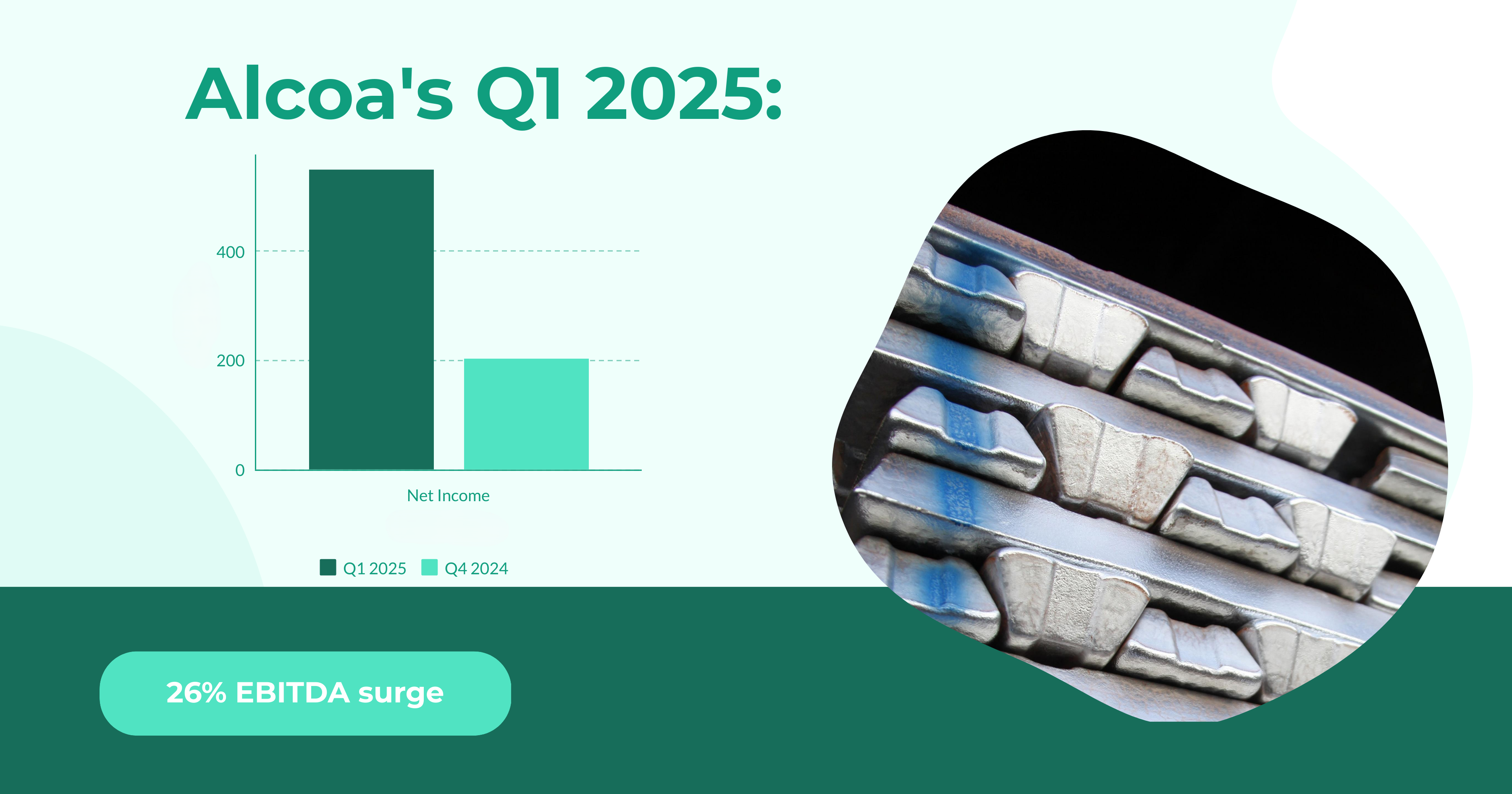

Alcoa Corporation delivered a robust financial performance in the first quarter of 2025, marking a sharp turnaround from the prior year and a solid improvement over the previous quarter. Net income more than doubled sequentially, driven by higher aluminium prices, effective cost management, and strategic operational decisions. Despite slight revenue contraction and new US tariffs on Canadian aluminium, Alcoa’s performance reflected operational resilience and smart capital moves.

Alcoa posted a net income of USD 548 million (USD 2.07 per share) in Q1 2025, up 171 per cent from USD 202 million in Q4 2024 and a stark reversal from the USD 252 million loss in Q1 2024. Adjusted net income reached USD 568 million (USD 2.15 per share), showing a 106 per cent increase from the prior quarter.
Adjusted EBITDA excluding special items rose to USD 855 million, up 26 per cent sequentially and over sixfold from USD 132 million a year earlier. These gains were mainly due to stronger aluminium pricing, lower alumina costs, and improved bauxite offtake and pricing arrangements.
Alcoa’s revenue slipped 3 per cent quarter-over-quarter to USD 3.37 billion due to lower alumina and aluminium shipments. Alumina third-party shipments declined 8 per cent, and aluminium shipments dropped 5 per cent, which was largely tied to shipment timing and the absence of Ma’aden offtake volumes.
Yet, margin expansion was significant. Net income margins jumped to 16.3 per cent, up from 5.8 per cent in Q4 2024, thanks to favourable commodity pricing and the absence of main restructuring costs seen in late 2024.
A key challenge in Q1 was the reimposition of US Section 232 tariffs on Canadian aluminium, effective March 12. Alcoa incurred USD 20 million in tariff-related costs, which partially offset aluminium segment gains.
Aluminium segment operating costs per metric ton increased to USD 2,775, up from USD 2,675 in Q4 2024. The rise was largely due to the expiration of a USD 30 million benefit from the US Inflation Reduction Act. In contrast, alumina production costs stayed flat at USD 312 per tonne, while production volumes declined 1 per cent to 2.35 million tonnes.
 Events
Events
 e-Magazines
e-Magazines
 Reports
Reports



Responses






